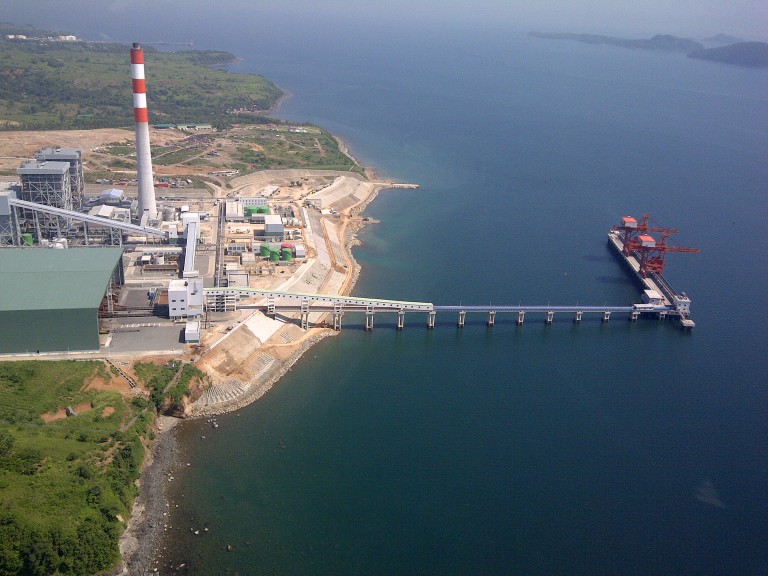Red Alert in Luzon expected in the “next couple of days”
- May 31, 2021
- 0

Following this afternoon’s Red Alert in the Luzon Grid resulting in rotational brownouts, the Department of Energy (DOE) said that this could continue in the coming days with the unexpected shutdown of major power plants.
Speaking to reporters on Tuesday, Energy Asec. Redentor Delola indicated that a key factor in averting the Red Alert would have been GNPower Dinginin Unit 1’s resumption of operations. The plant, currently operating at 600 megawatts (MW), was supposed to go back online this week pending testing activities, but had to be delayed.
“Mukhang matatagalan yung restoration. So, there’s a possibility that this yellow and red alert will still last for the next couple of days because there’s a suspected boiler tube leak in [Unit 1],” he said.
“During the past few weeks, we were able to maintain a reserve level of around 1,000-1,200MW. Now that we no longer have GNPower Dinginin, [we’re] left with around 400-600MW to work with. But with the additional plant outage of San Roque, that brought us to the red alert level because the reserves level that we have now is only around 200-400MW,” he pointed out further.
The 435MW San Roque hydroelectric power plant (HEPP) in Pangasinan is on planned outage. HEPPs are allowed to go offline during the peak demand period between April and June.
DOE Electric Power Industry Management Bureau Director Mario Marasigan said that peak demand as of its 1PM briefing was at 11,514 megawatts (MW), while available capacity was at 11,729MW. Since the regulating reserve (RR) was at 215MW, this pushed the Luzon Grid into the Red Alert status that time. A Red Alert is declared when a grid’s RR is between 200-400MW.
Prior to this, a Yellow Alert was already declared at 11AM. The DOE had warned back in April of a possible Yellow Alert until June should power plants bog down.
“We need to maintain more than [400MW] to ensure na walang magiging rotational outage,” Delola said.
The rotating brownouts were felt in parts of Isabela, Quirino, Zambales, Quezon, and the Manila Electric Company’s (MERALCO) franchise area. Power Philippines received reports of outages in Manila and Cavite, which are within the power giant’s franchise area, during the DOE briefing.
Another major factor for the thinning of reserves is the extended outage of the 647MW Unit 2 of the Sual coal-fired power plant, also in Pangasinan, which was supposed to go back online as early as May 16. However, the plant’s operator asked a one-month extension for additional repairs. Sual Unit 2 is expected to go back online by the third week of June.
Then there’s also the de-rating of the Ilijan gas-fired power plant in Batangas City from 1,200MW to just 716MW due to the restriction of natural gas from Malampaya.
“Napansin na namin yung de-ratings early this month, so we coordinated with the ERDB (Energy Resource Development Bureau) to determine the cause. Humihina yung pressure [ng Malampaya], so they really have to restrict. [Wala] pang binibigay sa ating timeline kung kailan makakabawi ang Malampaya. It will depend on the withdrawal [of our] power facilities,” Marasigan said.
Energy Usec. Felix William Fuentebella also emphasized that Malampaya’s current gas restriction does not necessarily have anything to do with its depleting supply.
“May [kailangang] sufficient level of pressure para umandar yung gas papunta sa mga planta, and pag na-u-utilize masyado yung gas, humihina parang sa balloon o sa tire pressure. Humihina yung ihip. It does not necessarily mean na affected yung reserves o kumokonti siya. It’s just na na-o-overwork o nagagamit masyado yung [natural gas] plants to the point na humihina minsan yung pressure niya,” he explained.
Meanwhile, Unit 1 of the GNPower Mariveles coal plant in Bataan and Unit 2 of Sem-Calaca Power Corporation’s (SCPC) facility in Batangas may go online again in July. SCPC Unit 2 has particularly been out since December 2020. The Caliraya-Botocan-Kalayaan HEPP is also offline.
It’s not just plant shutdowns that caused reserves to thin, but also the sudden spike in demand due to the high heat index registered in the last few days.
“For every increase in temperature, meron tayong estimate na 100MW na requirement [in demand],” Marasigan emphasized. The heat index reached a sizzling 51 degrees Celsius on Saturday.
Photo from AboitizPower website.